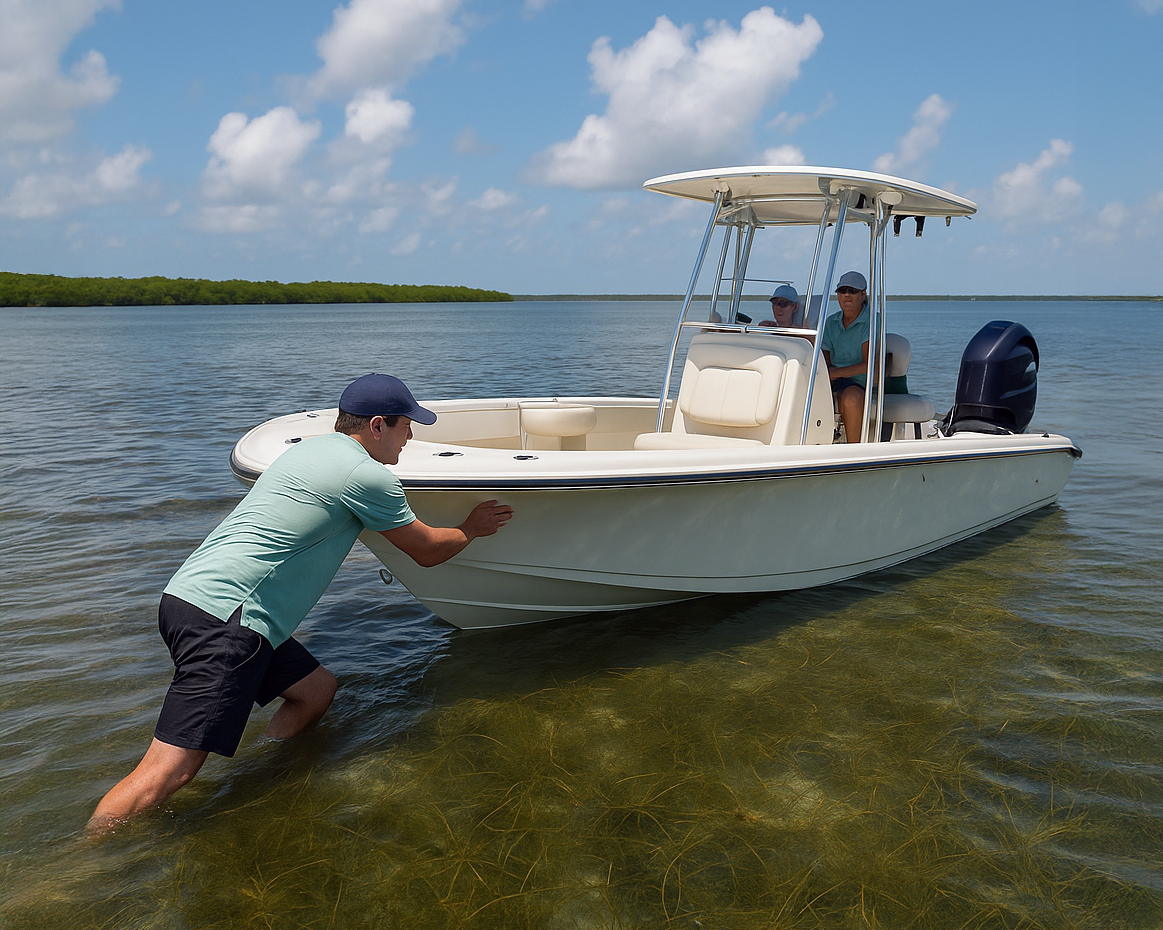Navigating Southwest Florida’s Waterways
Boating in Southwest Florida presents both alluring views and unexpected challenges. As lovely as the coastlines and serene back bays are, unforeseen obstacles can lurk beneath the surface, notably sandbars and grass flats that shift over time. Understanding how to navigate these waterways not only enhances the safety of your journey but also preserves the integrity of both boat and environment.
Inexperienced boaters may be prone to the common mishap of running aground, where water depths can change dramatically without warning. With the right knowledge, you can avoid getting stuck and know how to safely return to deeper waters should the situation arise.
Strategies to Avoid Running Aground
Know Before You Go
Before embarking on your maritime adventure, familiarizing yourself with nautical charts—whether paper or digital—is critical. Consider utilizing apps like Navionics, Garmin ActiveCaptain, or Aqua Map. These tools serve as invaluable resources for navigating the shifting tides and waters of Southwest Florida.
Observe the Water’s Surface
Water clarity can be both a blessing and a trap. Light sandy patches often indicate the presence of shallow sandbars. In contrast, darker areas may signify deeper water or seagrass beds, both of which can be deceptively shallow. Keeping a keen eye on your surroundings can prevent unfortunate encounters with the ocean floor.
Invest in Polarized Sunglasses
Donning polarized sunglasses is a straightforward yet effective way to reduce glare from the water, aiding in the identification of shallow areas and sandbars before it’s too late. Experienced local boaters recognize this necessity and never leave the dock without their shades.
Follow the Navigation Markers
Sticking to marked channels is the most reliable method for avoiding groundings. Remember the mantra: “Red, Right, Returning.” Staying between these markers is crucial, especially when exploring unfamiliar stretches of water.
Account for Tidal Changes
A deep channel at high tide can transform into a hidden sandbar at low tide. It’s prudent to check tide charts prior to setting sail, particularly if your journey takes you into backwaters or near grass flats.
Pace Yourself in Unfamiliar Areas
Adjusting your throttle when navigating new territories is essential. Reduced speed not only limits damage if you happen to bump the bottom but also provides more time to react when water levels begin to diminish unexpectedly.
What to Do When Stuck
Even seasoned sailors can find themselves beached from time to time. Here are crucial steps to take if you run aground:
Stop and Assess
Immediately shift your boat to neutral. Avoid spinning the propeller while grounded as it can cause damage to your vessel and sensitive underwater ecosystems. Retrace your path to locate the nearest deeper water.
Trim Up Your Engine
Raising your outboard or stern drive can lessen your draft, enabling you to move into shallower regions with less effort
Redistribute Weight
Direct passengers to shift toward the deepest part of the water or move toward the stern to lift the bow. This simple adjustment often provides the necessary lift to free the boat.
Try Reversing Gently
If grounding occurs in soft sand or mud, attempt to reverse while steering toward deeper waters. Exercise caution and avoid heavy throttle, as this may only drive you further in.
Physical Assistance
If conditions are safe, consider wading into shallow water to push the boat toward deeper areas. Many locals advocate for wearing water shoes in such situations for optimal safety and comfort.
Utilize a Kedge Anchor
When stranded beyond safe wading depth, deploy a small anchor into deeper waters using a paddleboard or dinghy, and then use the anchor line to pull yourself back into deeper waters.
Seek Assistance
If none of these methods work or if conditions worsen, don’t hesitate to call for help. Memberships with services like TowBoatUS and Sea Tow can prove invaluable in emergencies.
Respect for the Grass Flats
It is crucial to understand that seagrass beds in Florida are protected areas. Stranding on these grass flats can not only damage them but also lead to legal repercussions. Apply gentle techniques to free your vessel without churning the seagrass.
Concluding Thoughts
The waterways of Southwest Florida embody breathtaking beauty but also command respect. Avoiding groundings is an essential skill for all boaters, and understanding how to navigate these waters is crucial for a successful outing.
GetBoat recognizes the significance of these challenges, ensuring sailors are well-informed and equipped for safe adventures on the water. With unparalleled options to rent boats suiting every taste and budget, GetBoat supports the quest for adventure, enabling you to chart your own course through stunning destinations.
Experiencing new locations is a journey through culture and nature, including the local rhythm of life that influences every experience. Planning your next trip to the sea? Renting a boat offers unique access to hidden inlets, serene bays, and tranquil lagoons, each revealing aspects of the region’s charm just as vividly as its cuisine or architecture. For a seamless and transparent booking experience, consider GetBoat.com.
The global changes in boating and tourism underscore the importance of staying informed about navigational challenges, since every excursion brings a myriad of opportunities. Whether sailing through the enchantment of Florida’s waterways or embarking on another seafaring adventure, aligning yourself with services that prioritize transparency and convenience—like GetBoat—ensures you can focus on the experience itself. Embrace the freedom of the sea and make your next sailing venture truly unforgettable!

 Mastering Navigation to Avoid Sandbars and Grass Flats">
Mastering Navigation to Avoid Sandbars and Grass Flats">
